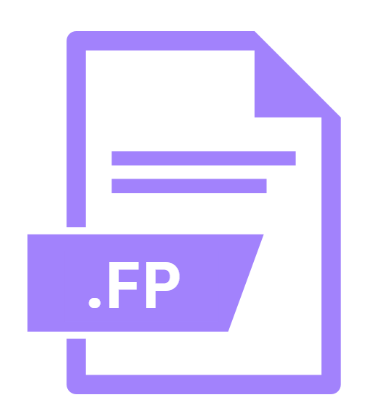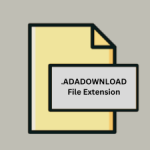.FP File Extension

Fragment Program File
| Developer | OpenGL |
| Popularity | |
| Category | 3D Image Files |
| Format | .FP |
| Cross Platform | Update Soon |
What is an FP file?
Files with the .FP extension are known as Fragment Program Files. These files play a crucial role in the realm of graphics programming, specifically within the context of shader programming used in computer graphics.
More Information.
The concept of fragment shaders emerged in the early 2000s, gaining prominence with the release of programmable graphics hardware.
Initially, graphics processing units (GPUs) could only perform fixed-function rendering tasks, limiting the customization and complexity of graphical effects.
Fragment shaders revolutionized this by allowing developers to write custom programs that could manipulate pixel data directly, enabling a wide range of visual effects such as realistic lighting, reflections, and advanced materials.
Origin Of This File.
Fragment programs, also referred to as pixel shaders, are a fundamental component of modern graphics processing.
They operate at the pixel level and are responsible for determining the final color and other attributes of each pixel on a rendered surface.
Fragment programs were introduced as a way to enhance the realism and visual complexity of rendered scenes by allowing developers to specify detailed shading and lighting effects on a per-pixel basis.
File Structure Technical Specification.
Fragment Program Files (.FP) typically contain code written in a specialized shading language such as OpenGL Shading Language (GLSL) or High-Level Shading Language (HLSL).
These languages provide a syntax for describing how pixels should be shaded based on various inputs such as light sources, textures, and geometry data.
The structure of .FP files often includes:
- Shader Code: The main body of the file consists of the shader program written in the designated shading language.
- Input and Output Specifications: Declarations specifying what inputs (such as textures or vertex data) the shader expects and what outputs (like color values) it will produce.
- Uniform Variables: Parameters that remain constant across all shader executions, often used for passing matrices, light positions, or other global data.
How to Convert the File?
Converting .FP files may involve translating them into other shading languages or adapting them for different graphics APIs. This process typically requires:
- Source Code Translation: Rewrite the fragment program in the syntax of the target shading language (e.g., translating GLSL to HLSL).
- API Adaptation: Adjust the program to accommodate differences in graphics APIs’ capabilities and requirements.
- Testing and Optimization: Validate the converted program’s functionality and performance across target platforms.
Advantages And Disadvantages.
Advantages:
- Customization: Allows developers to create highly customized visual effects that were not achievable with fixed-function graphics pipelines.
- Performance: Can optimize rendering performance by executing computations directly on the GPU, leveraging its parallel processing capabilities.
Disadvantages:
- Complexity: Writing and debugging shader code can be complex, requiring deep knowledge of graphics programming and shader languages.
- Compatibility: Fragment programs may not run on older hardware or software that does not support programmable shaders.
How to Open FP?
Open In Windows
- Use Microsoft Visual Studio with DirectX or third-party IDEs supporting OpenGL (e.g., Code::Blocks).
Open In Linux
- IDEs like Qt Creator or Emacs with OpenGL/GLSL plugins are popular choices for developing and compiling fragment programs on Linux distributions.
Open In MAC
- Xcode is commonly used for OpenGL development, providing an integrated environment for editing and compiling fragment programs.













